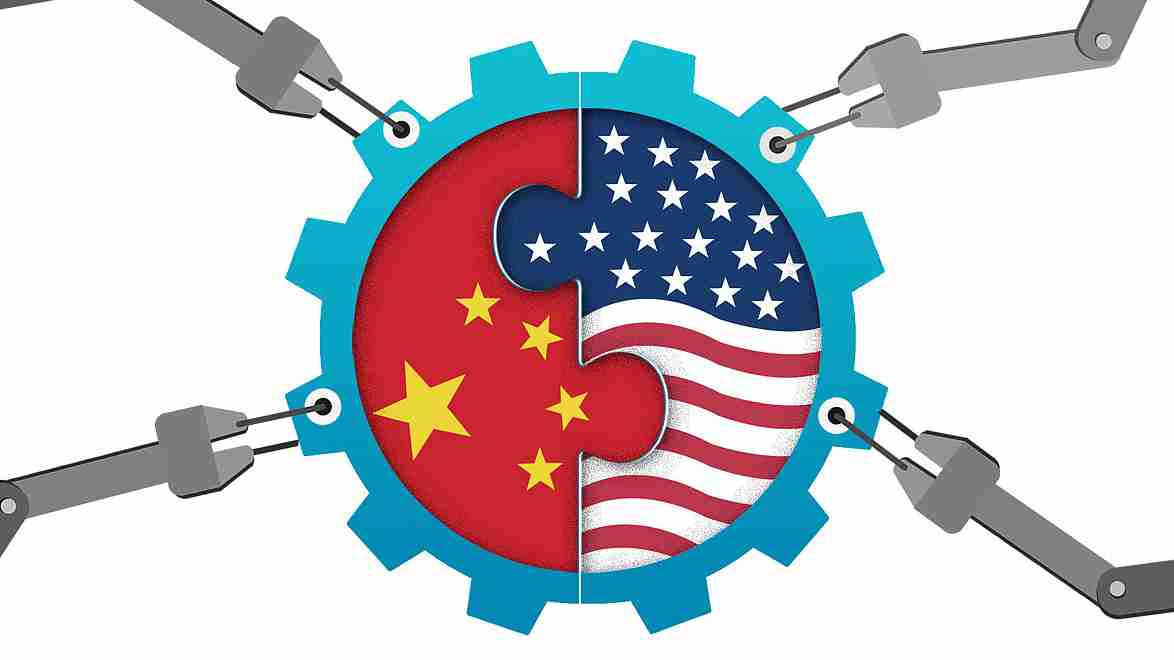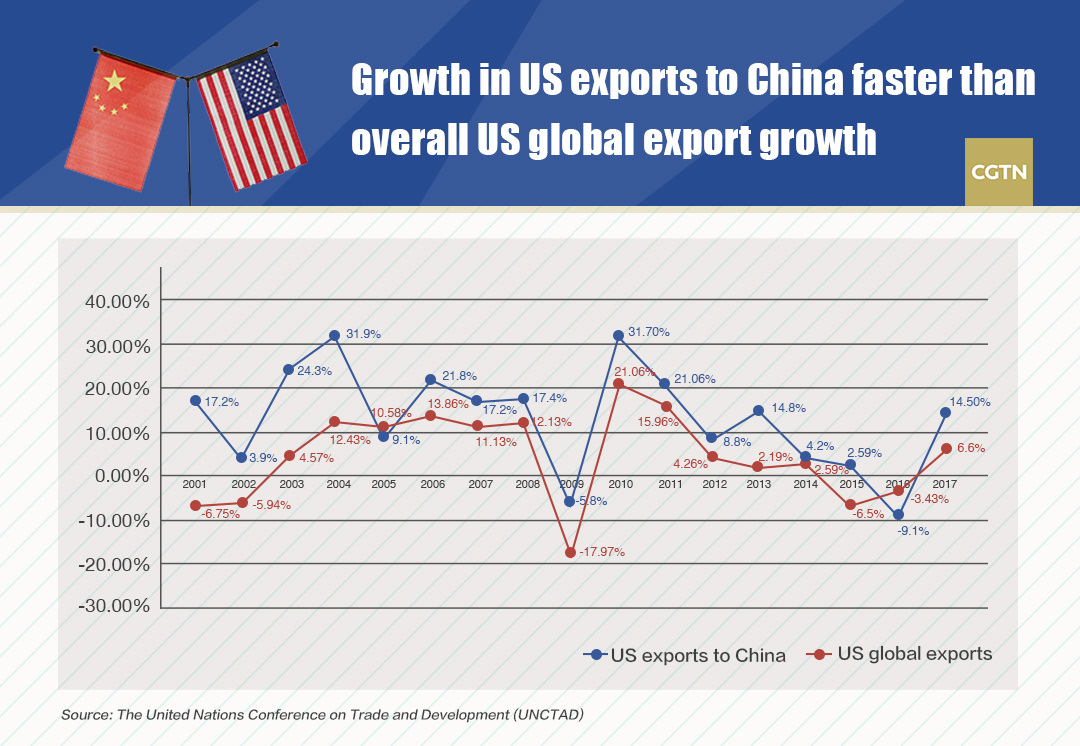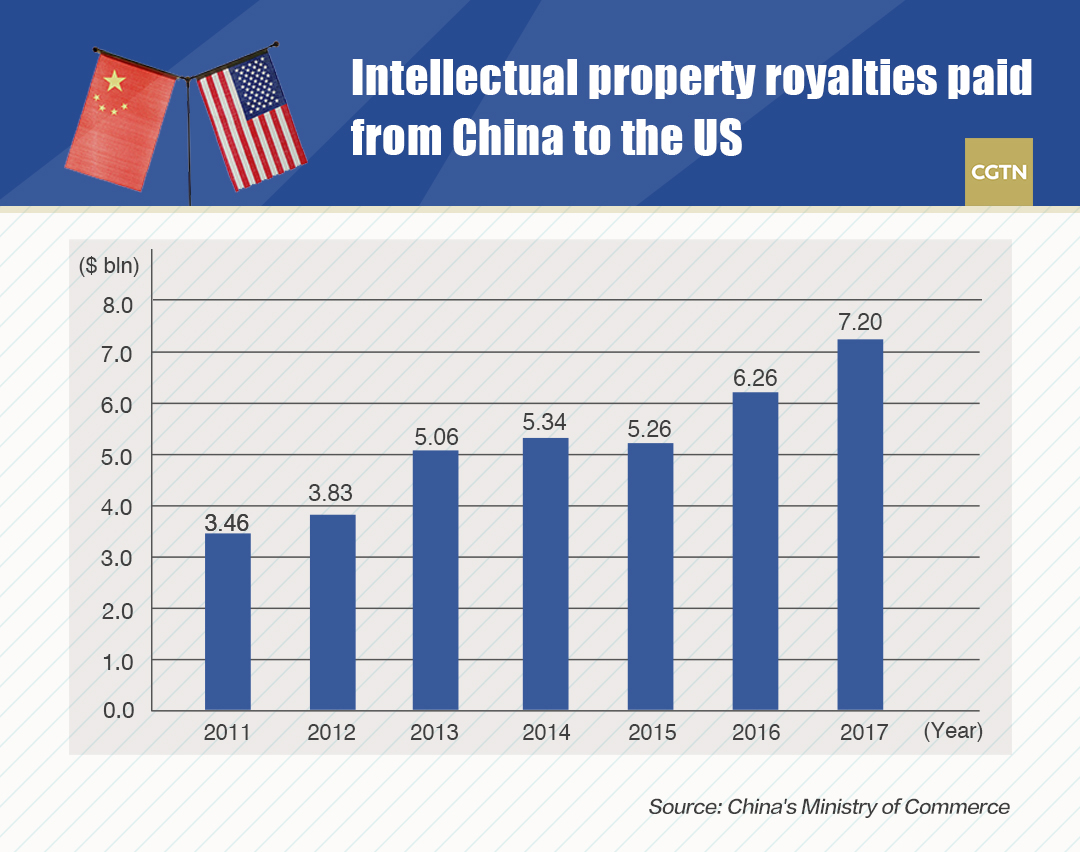
Business
17:04, 24-Sep-2018
China-US trade yields mutual benefits: MOFCOM
Updated
16:32, 27-Sep-2018
CGTN

China-US bilateral economic cooperation has undergone continuous development since the establishment of diplomatic ties between the two countries. Fruitful results have been yielded in various fields including goods trade, service trade and investment, which is a strong demonstration of mutual benefit and win-win cooperation, according to a white paper China released on Monday.
Significant trade partners and fruitful results
China and the US are significant trade partners to each other. Considering the labor division of China and the US in the global value chain, the two economies are highly complementary. It is necessary to fully exert the comparative advantages of both sides.
China's official data reflect that the bilateral goods trade in 2017 topped 583.7 billion US dollars, 233 times that in 1979. China's exports to and imports from the US account for 19 percent and 8 percent, respectively, of China's total exports and imports in 2017.
At the same time, US exports to China also grow rapidly. US exports to China in 2017 amounted to 129.89 billion US dollars, representing 577 percent growth compared with 2001, according to data from the UN.

In terms of the bilateral service trade, the number has tripled, climbing from 24.94 billion US dollars to 75.05 billion US dollars in the past ten years, according to statistics from the US.
It is notable that the US has become the largest source country for China's trade deficits, and the gap is widening, especially in the areas of travel, transport and intellectual property royalty.
US service exports to China has surged to 57.63 billion US dollars from 13.14 billion US dollars, a 3.4-fold increase from 2007 to 2017. Its annual trade surplus with China in service trade has increased by 30 fold to 40.2 billion US dollars, according to US data.
The royalties paid by China for intellectual property use increased from 3.46 billion US dollars in 2011 to 7.2 billion US dollars in 2017.

Mutual Benefit instead of zero-sum game
Trade cooperation has generated mutual benefits instead of being a zero-sum game. US' so-called "lose out to" China in trade is a false claim.
Bilateral economic cooperation greatly promotes the economic growth of the US, creating more local job opportunities as well as benefiting transnational companies.
It is shown that US exports to China and mutual investment have contributed 216 billion US dollars to the US' GDP.
The US job market also benefits from the bilateral relationship. A total of 2.6 million jobs in the US in 2015 are supported by the exports to China and bilateral investment, among which over 14,000 jobs are directly created by Chinese investment in the US, according to estimates from the US-China Business Council.
US corporations make great profits from the rapidly growing Chinese market, including, but not limited to, auto manufacturing, chip sales and financial institutions.
American companies' revenues in the Chinese market reached 517 billion US dollars in 2015 and 606.8 billion US dollars in 2016, making a profit of over 36 billion US dollars and 39 billion US dollars respectively.

SITEMAP
Copyright © 2018 CGTN. Beijing ICP prepared NO.16065310-3
Copyright © 2018 CGTN. Beijing ICP prepared NO.16065310-3